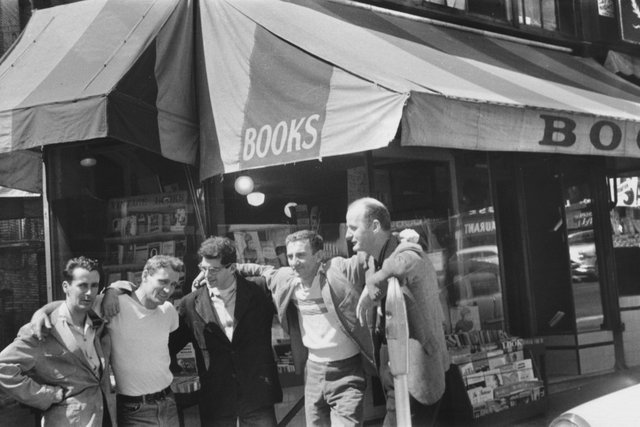An introduction to the mid-century countercultural poets who helped define a generation.
In the 1940s and 50s, a new generation of poets rebelled against the conventions of mainstream American life and writing. They became known as the Beat Poets––a name that evokes weariness, down-and-outness, the beat under a piece of music, and beatific spirituality. At first, they organized in New York City, Los Angeles, and San Francisco. By the 1950s, poets at the heart of the movement had settled in the Bay Area, especially in neighborhoods near Beat poet and publisher Lawrence Ferlinghetti’s bookstore, City Lights.
Beat poets sought to write in an authentic, unfettered style. “First thought, best thought” was how central Beat poet Allen Ginsberg described their method of spontaneous writing. Poetically experimental and politically dissident, the Beat poets expanded their consciousnesses through explorations of hallucinogenic drugs, sexual freedom, Eastern religion, and the natural world. They took inspiration from jazz musicians, surrealists, metaphysical poets, visionary poets such as William Blake, and haiku and Zen poetry. In his article “Driving the Beat Road,” Jeff Weiss explains, “More than a half-century after their emergence, the Beats still offer up wild style, a sense of freedom and wonder for the natural world almost unrivaled in postwar literature.”
Beat poetry emerged from the disillusionment that followed World War II, a period of unimaginable atrocities including the Holocaust and the use of nuclear weapons against Japan. Following the end of the war, the United States and the Soviet Union quickly entered a Cold War, a period of geopolitical hostility that created paranoia and cultural and political repression at home.
By the mid-1950s, the Beats helped to spearhead a cultural vanguard reacting against institutionalized American values, materialism, and conformity. On October 7, 1955, the Beats gave their first major public poetry reading, a seminal event held at Six Gallery in San Francisco. Among the five poets to perform their work was Allen Ginsberg, who first read “Howl,” a poem in the tradition of Walt Whitman that Ginsberg described as “an emotional time bomb that would continue exploding… the military-industrial-nationalistic complex.”

You got a 99.42% upvote from @dkpromoter!
Get Daily Return by delegating to the bot and earn a passive income on your spare SP while helping the Steem Community
500 SP 1000 SP 2000 SP 5000 SP 10000 SP 20000 SP